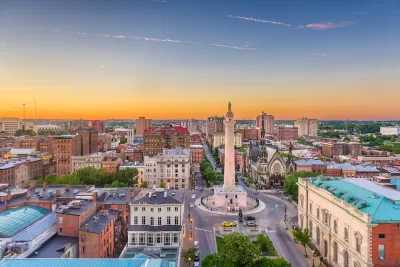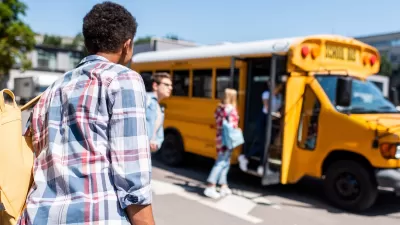When Baltimore got funding for a round of school renovations, the state directed it to design schools that would also advance neighborhood revitalization — and it learned some lessons about why that's not always so simple.

Baltimore's 21st Century School Buildings Program (21CSBP) demonstrates how school infrastructure investments can be leveraged for broader community development goals. Launched in 2013 with $1.1 billion in funding, the program has built or renovated 27 schools while intentionally connecting these investments to neighborhood revitalization efforts.
Four key lessons emerged from Baltimore's experience:
- Different institutional philosophies between education and community development agencies created implementation challenges. While the school district prioritized addressing historical inequities, housing and community development agencies favored investing in areas with greater market potential.
- High-capacity community organizations proved essential for connecting school improvements to neighborhood development. The Southeast Community Development Corporation successfully integrated community school coordination with broader neighborhood initiatives, while areas lacking strong community organizations struggled to create these connections.
- School stability requires comprehensive housing strategies that prevent displacement. The Cherry Hill neighborhood case study showed how public housing policy and demographic trends affect school enrollment and facility utilization.
- Building community trust requires acknowledging historical disinvestment while delivering visible neighborhood improvements. Baltimore's INSPIRE program helped rebuild trust through quick implementation of community-driven projects like pocket parks, sidewalks, and lighting around new schools.
The initiative demonstrates both the challenges and opportunities of using school infrastructure investments as catalysts for community development. While institutional coordination proved complex, Baltimore's experience shows how intentional alignment between school and neighborhood investments can amplify positive outcomes for both education and community development.
FULL STORY: Rebuilding Together: How One Baltimore Program Advanced Both Education and Community Development

Planetizen Federal Action Tracker
A weekly monitor of how Trump’s orders and actions are impacting planners and planning in America.

Maui's Vacation Rental Debate Turns Ugly
Verbal attacks, misinformation campaigns and fistfights plague a high-stakes debate to convert thousands of vacation rentals into long-term housing.

Cuomo Is the Candidate of Both NIMBYs and Developers. What Gives?
In the New York City mayoral race, odd bedfellows align to preserve the housing status quo.

San Antonio and Austin are Fusing Into one Massive Megaregion
The region spanning the two central Texas cities is growing fast, posing challenges for local infrastructure and water supplies.

Charlottesville Temporarily Has No Zoning Code
A judge ordered the Virginia city to throw out its newly revised zoning code, leaving permitting for new development in legal limbo.

In California Battle of Housing vs. Environment, Housing Just Won
A new state law significantly limits the power of CEQA, an environmental review law that served as a powerful tool for blocking new development.
Urban Design for Planners 1: Software Tools
This six-course series explores essential urban design concepts using open source software and equips planners with the tools they need to participate fully in the urban design process.
Planning for Universal Design
Learn the tools for implementing Universal Design in planning regulations.
Heyer Gruel & Associates PA
JM Goldson LLC
Custer County Colorado
City of Camden Redevelopment Agency
City of Astoria
Transportation Research & Education Center (TREC) at Portland State University
Jefferson Parish Government
Camden Redevelopment Agency
City of Claremont





























